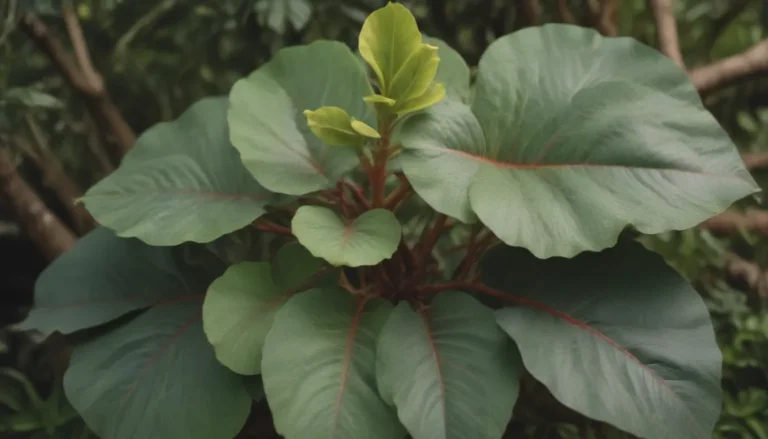Comprehensive Guide to Growing and Caring for Cypress Vine

Are you looking to add a touch of elegance and beauty to your garden? Look no further than the cypress vine (Ipomoea quamoclit). This stunning flowering vine is a member of the bindweed family and is known for its small, delicate star-shaped blooms in vibrant red. But the beauty of the cypress vine doesn’t stop there – it also boasts graceful, fern-like foliage that adds a touch of whimsy to any garden.
In this comprehensive guide, we will take you through everything you need to know about growing and caring for cypress vine. From planting and propagation to pruning and common problems, we’ve got you covered with all the information you need to keep your cypress vine thriving.
Planting Cypress Vine
If you’re starting from scratch, it’s best to plant your cypress vine in the spring after the threat of frost has passed. This fast-growing vine will begin its climb once the soil warms up, and you can expect to see blooms in as little as a month. Keep an eye out for wandering vines that may be trying to overtake other plants in your garden, as the cypress vine has a tendency to spread aggressively.
- Plant in the spring after the threat of frost has passed.
- Watch for invasive vines that may overtake other plants.
Cypress Vine Care
When it comes to caring for your cypress vine, there are a few key things to keep in mind. This vine is a true climber, so be sure to provide it with a vertical structure to grow on. Cypress vine is not suitable for container planting, as it requires space to climb and spread.
- Provide a vertical structure for the vine to climb on.
- Watch for the vine growing out rather than up.
- Cypress vine is delicate and easily damaged, so handle with care.
Warning:
Cypress vines are considered invasive in the Southeastern U.S. Deadheading the flowers will prevent seed production and spread.
Light, Soil, Water, and Temperature
For your cypress vine to thrive, it needs full sun to bloom. Make sure it has proper support to climb on and is not shaded by other plants. Well-drained soil is crucial for the health of your vine, as it can tolerate drought but will struggle in poorly draining soil. Keep the soil evenly moist but not soggy for optimal growth.
- Full sun is essential for blooming.
- Well-drained soil is critical for the health of your vine.
- Keep the soil evenly moist but not waterlogged.
- Cypress vine can tolerate heat but will wither in cold temperatures.
Fertilizer and Pruning
Fertilize your cypress vine with a balanced fertilizer according to product recommendations to encourage growth and blooming. Regular pruning is also essential to prevent the vine from becoming too dense and prone to disease. Trim as needed to open up the plant and allow for airflow.
- Feed with a balanced fertilizer according to product recommendations.
- Regularly prune to prevent the vine from becoming too dense.
Propagating Cypress Vine
Cypress vine is easily propagated by allowing it to seed itself. If you wish to move a vine to another location, you can dig up the seedling in the spring and transplant it. Be mindful that cypress vines tend to spread vigorously, so keep an eye on their growth to prevent them from becoming invasive.
- Allow the vine to seed itself for propagation.
- Dig up and transplant seedlings to move to a new location.
How to Grow Cypress Vine From Seed
While you can sow cypress vine seeds directly outdoors after the danger of frost has passed, many gardeners prefer to start them indoors to get a jump on the growing season. Be sure to avoid damping off problems by providing proper air circulation and thinning out seedlings as needed.
- Start seeds indoors for an early start to the growing season.
- Avoid damping off problems by ensuring proper air circulation.
Overwintering and Bloom Encouragement
After the foliage of your cypress vine has wilted, cut back the dead vegetation and mulch as you would the rest of your garden. If you want your vine to bloom, ensure it has adequate sunlight and moisture. Cypress vines rarely require extra effort to bloom, but if yours seems reluctant, there are steps you can take to encourage flowering.
- Mulch and cut back dead vegetation for overwintering.
- Ensure proper sunlight and moisture for blooming.
- Take steps to encourage blooming if necessary.
Common Problems and Alternatives
While cypress vines are hardy and relatively problem-free, they may experience yellowing leaves due to insufficient sunlight or over-watering. Climbing hydrangeas are a great alternative to cypress vines, as they are perennial climbers that are not considered invasive.
- Monitor for yellowing leaves and adjust sunlight and water as needed.
- Consider alternative perennial climbing plants like climbing hydrangeas.
In conclusion, the cypress vine is a stunning addition to any garden, with its vibrant red blooms and delicate foliage. By following the tips and guidelines outlined in this comprehensive guide, you can ensure that your cypress vine thrives and brings beauty to your outdoor space. Happy gardening!





